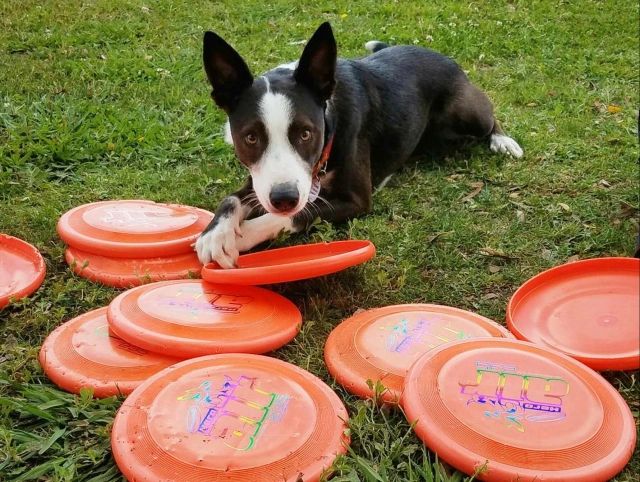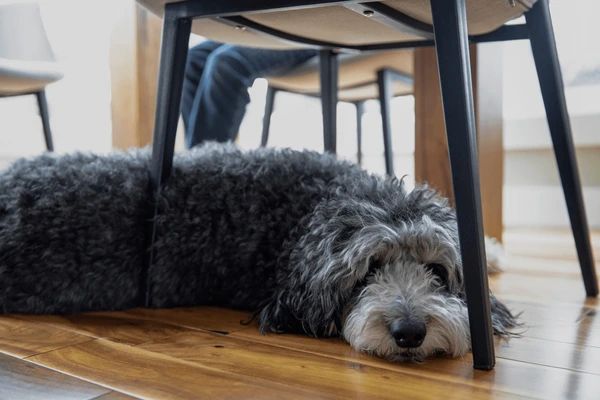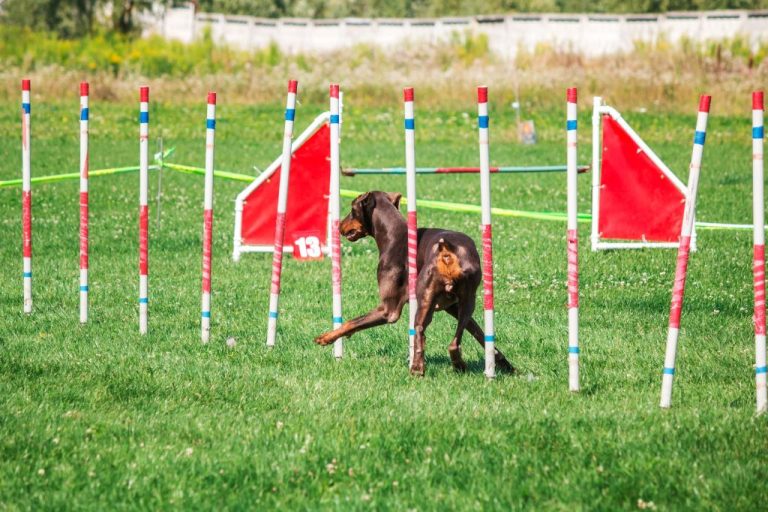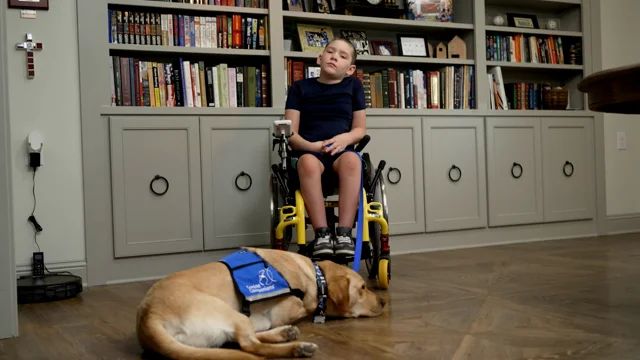Tactile Toys: Texture Exploration For Dogs
Tactile toys are an enriching type of interactive toy designed specifically for dogs. These toys engage a dog’s sense of touch by incorporating a variety of textures, surfaces, shapes and materials. The toys encourage dogs to use their paws, nose and mouth to manipulate and explore the features of the toy. Tactile play provides mental stimulation, sensory enrichment and physical activity for dogs.
Tactile toys offer many benefits for dogs. They provide mental exercise by presenting puzzles or challenges for the dog to solve. The textures and moving parts hold the dog’s interest and focus for longer. Tactile play satisfies dogs’ innate curiosity and need to explore their environment through touch. It gives them an outlet for natural behaviors like sniffing, licking, nibbling and digging. Varied textures can soothe dogs and help relieve stress or anxiety. Overall, tactile toys are an excellent way to engage a dog’s brain and senses for a more fulfilling play and bonding experience.
What Are Tactile Toys?
Tactile toys are designed to stimulate a dog’s sense of touch through different textures, materials, and sensations (Enabling Devices). They provide important sensory input and feedback for a dog to explore the world around them. Tactile toys allow dogs to use their paws, mouth, nose, and body to interact with a variety of surfaces and objects. This helps develop their sensory perception, fine motor skills, cognition, and problem solving abilities.
Tactile toys come in many forms, featuring textures like nubs, bumps, bristles, and different fabrics. They may incorporate rubber, plastic, wood, rope, silicone, or soft plush materials that create unique tactile experiences for dogs. Some toys crinkle, crackle, or make noise. Others have moving parts for tugging, tossing, or chasing. This diversity and novelty is enriching and mentally stimulating for dogs.
Compared to regular chew toys, tactile toys place more emphasis on sensation and discovery through touch. They tap into dogs’ natural curiosity and instinct to explore new things with their nose, paws, and mouth. Tactile play encourages dogs to thoroughly examine and manipulate toys, which builds their cognitive skills. It provides valuable mental enrichment and developmental benefits beyond just chewing (Creating Compassionate Kids).
Benefits of Tactile Toys
Tactile toys provide many important benefits for dogs. By appealing to their sense of touch and allowing them to manipulate and interact with different textures, tactile toys provide valuable cognitive stimulation. The mental exercise of feeling, tossing, chewing, or tugging at these toys helps to relieve boredom and stress by engaging a dog’s problem-solving skills and satisfying their curiosity.
Tactile play also gives dogs a safe and constructive outlet for natural behaviors like chewing, digging, shredding and hunting. Allowing them to use their natural instincts in this capacity can curb unwanted behaviors and destructive tendencies (Source 1). Anxious or high-energy dogs in particular benefit from having textured toys that allow them to work out their needs in a positive way.
Furthermore, the comfort and security provided by certain tactile toys like plush and fleece can have calming effects for puppies or dogs experiencing anxiety. The soft, familiar textures can help them feel relaxed and reassured (Source 2). Overall, tactile toys are an excellent way to provide dogs with enrichment, address natural behaviors, and support their physical and mental health.
Types of Tactile Toys
There are many different types of tactile toys that provide various textures and sensations for dogs to explore. Some of the most common categories include:
Plush Toys
Plush toys made from soft, fuzzy fabrics like fleece or velour are a popular tactile toy for dogs. The soft textures feel pleasing on a dog’s nose and mouth while playing. Plush toys come in many shapes like stuffed animals, bones, balls and more. Just be sure to supervise playtime to prevent destroying and ingesting the stuffing (source: https://k9tacticalgear.com/collections/interactive-toys).
Rubber Toys
Rubber chew toys have varying nubs, ridges and shapes that provide interesting textures and surfaces for dogs to explore. The rubber material also helps massage gums and scrape away plaque. Rubber is durable yet still allows some flexibility and grip. Some options like Kongs can also be filled with treats or peanut butter.
Rope Toys
Woven rope toys are great for tug-of-war and chewing. The fibers provide an intriguing texture as dogs gnaw and play. The fibers scrape teeth to reduce tartar buildup. Knotted ropes and tug toys promote interactive play between dogs and owners.
Interactive Toys
There are many interactive toys that combine textures with cognitive stimulation. Food puzzle toys feature various chambers, flaps and compartments made from different materials like rubber or wood. This provides mental exercise along with intriguing tactile sensations (source: https://www.earthbornholisticpetfood.com/blog/training-behavioral/the-ultimate-guide-to-interactive-dog-toys/).
Edible Toys
Some chew toys for dogs are actually edible and made from food materials. Bully sticks, Himalayan chews and dried animal parts provide tasty textures and flavors along with the satisfaction of gradually consuming the chew toy. Just be sure to select high-quality, digestible options.
Choosing the Right Textures
When selecting tactile toys for your dog, it’s important to consider your dog’s preferences, age, and chewing style to find textures they enjoy. Puppies tend to benefit from softer textures they can easily mouth and chew, while adult dogs often prefer tougher textures they can really sink their teeth into.
Many dogs enjoy plush toys with soft, squishy textures. These should be monitored for heavy chewers as they may be torn apart and eaten. Rubber is a popular texture for fetch toys and chew toys. As cited from Ballistic Fun, rubber and TPR offer durability, flexibility, and strength to stand up to tough chewing.
Wood textures like bamboo are ideal for gentle chewers. Hard rubber Kong-style toys work well for aggressive chewers. Food-dispensing toys with grooves, holes, pockets, etc. provide interactive tactile experiences. Consider all characteristics of the toy and your individual dog’s needs when selecting the right textures.
Safety Considerations
While tactile toys provide great mental and physical enrichment for dogs, proper supervision and care when selecting toys is important. As the ASPCA notes, “Supervising your dog during play sessions can help prevent injuries and keep vet costs down.”
Be sure to inspect toys for wear and tear, as pieces can break off and become choking hazards if ingested. Veterinarians recommend immediately discarding damaged toys. According to DogLab, “Any toy that’s falling apart or has loose parts is dangerous for your dog.”
Avoid toys with small parts that could become lodged in your dog’s throat or intestines if swallowed. Experts at Tuft’s University say “the toy or treat should be large enough so that it cannot be swallowed whole.”
Project Hive Pet Company advises monitoring aggressive chewers carefully, as they may tear pieces off toys quickly. You know your dog best – supervise their play and swap out toys as needed.
With observation and care when selecting appropriate textures and toy styles, tactile play can be safe as well as mentally stimulating for dogs.
DIY Tactile Toys
Making your own tactile toys at home is a great way to provide your dog with safe, customized options. Here are some ideas for handmade tactile toys to engage your dog’s sense of touch:
Hide kibble or treats in an egg carton or cardboard box. Then let your dog sniff out the goodies inside. The ridges and holes provide sensory stimulation (source).
Make a “feely ball” by cutting X-shaped slits into a tennis ball and stuffing it with scraps of fabric, fleece strips, or knotted t-shirt pieces. Your dog will enjoy manipulating the ball and pulling out the textures inside (source).
Braid together fleece or cotton t-shirt strips to create tug toys with different tactile properties. Adding knots along the length adds another texture dimension.
Avoid any toys with small removable parts that could present a choking hazard. When using fabrics, choose durable types that will not fray or come apart into threads if aggressively chewed.
Get creative with household items like bubble wrap, toilet paper tubes, mesh produce bags, felt, burlap, etc. Just be sure to monitor your dog with any DIY toy and remove if any pieces start coming loose.
Activities for Tactile Play
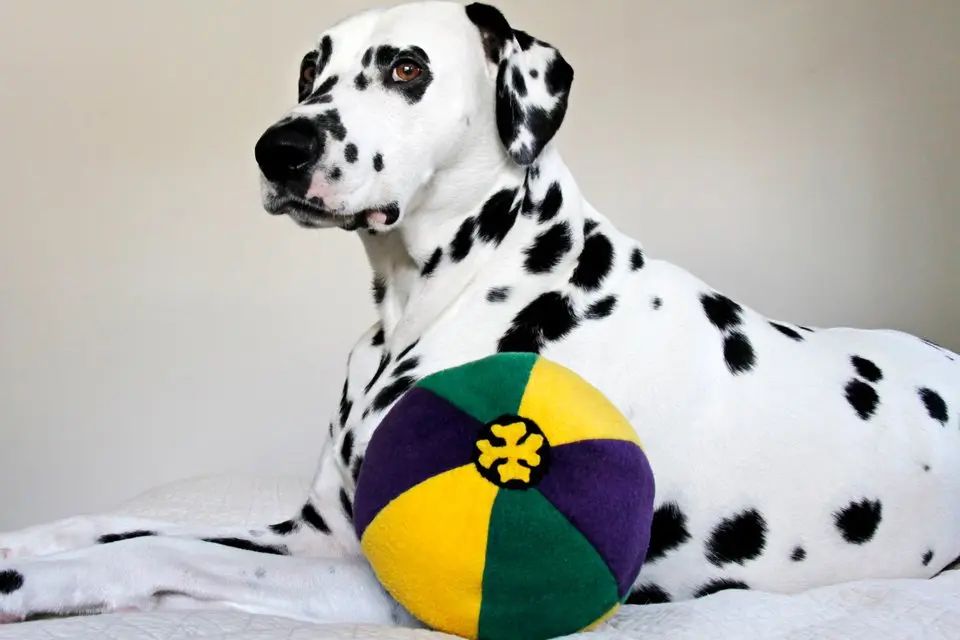
There are many fun activities you can do at home to engage your dog’s sense of touch and provide enriching tactile playtime:
Hide and Seek: Hiding treats in boxes filled with different textures like shredded paper, packing peanuts, or blankets is a great way to encourage your dog to explore new textures while using their nose to seek out the hidden rewards. You can increase the challenge by hiding the treats under multiple layers of textures.
Puzzles: There are tactile puzzle toys made specifically for dogs that require manipulating pieces with their paws and nose to reveal hidden treats. Start with simple puzzles and increase the difficulty as your dog learns how to solve them. The mental stimulation will tire them out.
Obstacle Courses: Set up a homemade agility course using tactile surfaces like rugs, bubble wrap, turf, and ramps. Running through the course will provide physical and mental exercise. You can guide your dog through each obstacle and have them sit or perform another trick on the different textures.
Rotating various tactile toys and surfaces will prevent your dog from getting bored. Get creative and try setting up activities that combine smell, touch, sight and sound for maximum sensory enrichment.
Final Thoughts
Tactile toys provide sensory stimulation and enrichment for dogs. By engaging your dog’s sense of touch, these toys promote play, learning, and focus. The different textures also aid dental health by preventing plaque buildup as your dog chews and licks.
There are many types of tactile toys on the market, or you can easily make your own. Consider your dog’s chewing style and preferences when selecting textures. Avoid any choking hazards and supervise your dog during play.
Incorporating tactile play into your dog’s routine provides mental and physical exercise. Hide treats in textured toys or create tactile trails around your home or yard. Shop-bought or homemade tactile toys are easy, budget-friendly ways to keep your dog stimulated and content. Just make sure to monitor safety and replace toys once worn.
With the right kinds of tactile toys, you can promote better health and behavior in your dog. Texture play activates your dog’s brain, reduces stress, and prevents destructive behaviors like chewing furniture. Discover the power of tactile stimulation today!
References
[1] Fogle, B. (2018). The Dog’s Mind: Understanding Your Dog’s Behavior. New York: Simon & Schuster.
[2] Coren, S. (2004). How Dogs Think: Understanding the Canine Mind. New York: Free Press.
[3] Miklósi, Á. (2015). Dog Behaviour, Evolution, and Cognition. Oxford: Oxford University Press.
[4] Horowitz, A. (2014). Domestic Dog Cognition and Behavior. Berlin: Springer.
[5] Serpell, J. (2016). The Domestic Dog: Its Evolution, Behavior and Interactions with People. Cambridge: Cambridge University Press.

